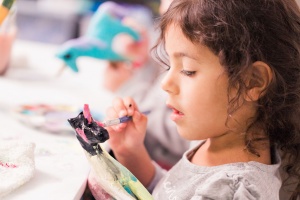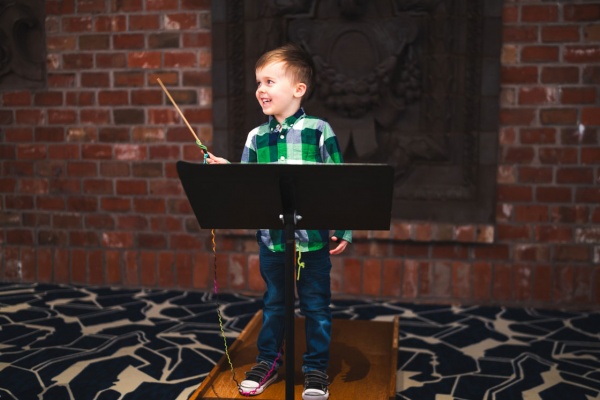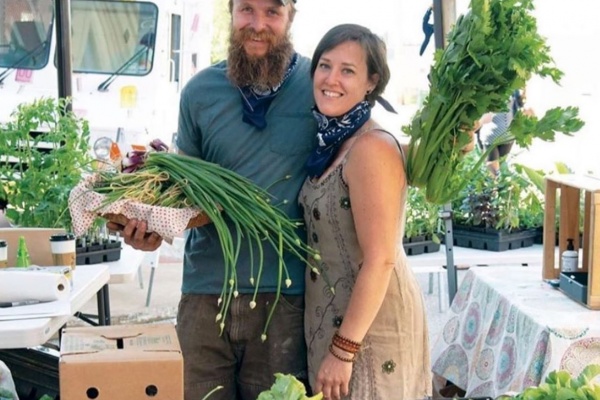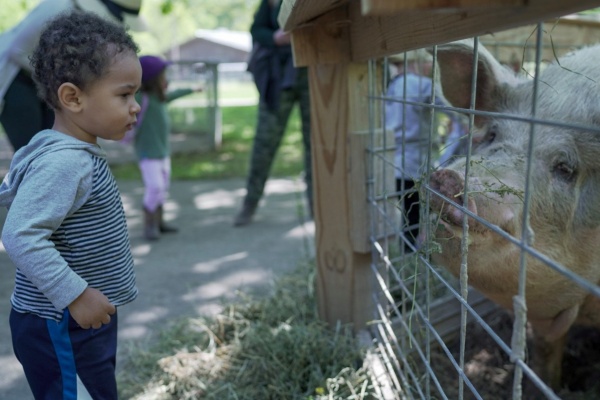

Parenting During the Pandemic: Overwhelmed and Exhausted
Last Saturday, as I lay on my couch binge-watching 30 Rock, my arms snuggled tightly around a bag of Flamin’ Hot Cheetos and a two-liter of Pepsi, my husband bounced into the living room.
“So, what outdoor projects are you working on this weekend?”
He barely escaped the wrath that only an exhausted mom hopped up on Red Dye 40 could muster.
No, last Saturday I didn’t plant a victory garden or make a sourdough starter. I wasn’t the mom who created tickets and set up a concession stand in my house for movie night (seriously, WHICH ONE OF YOU DID THIS and how did word get back to my kids?). I stayed on the couch all day and hissed at anyone who invaded my territory.
Like millions of other parents managing homeschooling and working from home, I’m beat. According to Gallup, 62 percent of Americans have worked from home during the pandemic, leaving many parents to juggle calculus with conference calls. Thousands of other parents who are putting their lives on the line as essential employees come home only to be rewarded with an hour of fifth-grade fractions.
Add to the stress the challenges many home educators face. There are families with multiple children all battling over the family computer to jump on Zoom classes at the same time. Kids with learning disabilities, like my child, who need constant help without a speech therapist, reading teacher or social worker on site. Or, those facing the digital divide in urban neighborhoods and rural communities due to socioeconomic inequalities, unable to easily access the eLearning their children need.
So, yeah, there’s a reason Friar Tuck’s is considered an essential business right now.
When school and work collide
For Casey Shank, a teacher, wife to a pastor of a large Metro East church, and mom to four kids, ages four through 12, the tug of war between homeschooling and working recently came to a head during a Zoom class with 36 preschoolers in attendance.
“Ben, my youngest, punched his sister in the nose in the middle of my class,” she said. “I could mute the screaming and crying, but I’m the teacher, and if I can’t talk, I can’t run the class. So, I tried to hold Kate off camera as I rubbed her back. Life has become so weird—running school, running church out of your house while you’re trying to run your family. It’s really hard.”
It’s a frustration many parents experience when the nine to five is demolished. For me, it means getting up at 4 a.m. so I can put in five hours of work before I help my daughter with homework for another four. For other parents, it’s hiding out in the bathroom for conference calls, or like my friend, Allison, sitting outside St. Louis Bread Company in her car to use their WIFI so she could finish a report while her fussy toddler stayed home with her husband.
To help manage the stress of the workday, Clayton psychologist Dr. Carol Dyer recommended setting a schedule. “Routine, structure and rituals can be helpful as a sort of scaffolding to frame the day—not in a rigid way, but more generally, family meals, time devoted to some productivity, and most importantly, incorporating what the ancient Greeks called the ‘emotional playground.’”
She noted that a number of activities, like stories, music, art, and games are key for helping family members safely get out their emotions. Her family, for instance, turned their dining room table into a ping pong table. For her son, playing to win has helped him express his frustration of being unable to control so many other things in this new normal.
“Balancing work and play is challenging, and we won’t be perfect at it,” she added. “Perhaps what works for one family won’t work for another. These ideas are neither complete or workable in every situation as some people feel extremely distressed and depressed or unable to think clearly and calmly, but even—or especially—for them, connectedness and closeness can help.”
Shank said two things are helping her find balance. One was being clear with her employer regarding the challenges she faced while working from home. When her principal requested that staff meet every morning through Zoom, Shank explained it was a challenge for parents trying to get their kids ready for school while planning for their own classes that day. The meetings immediately fell from five times a week to two.
Like Dr. Dyer, she also developed a schedule for the family that included breaks for recess and divided up housework between the kids.
“I needed to give the kids specific jobs all day, because I’m just one person. I can’t sit and help my daughter with reading if I am cleaning up after lunch, so I set up a kitchen job rotation. One kid sets the table, another cleans the table, another’s in charge of the kitchen floor. I heard one of them say, ‘Hey! I just swept this floor!’ and it made me laugh. They’re starting to sound like me!”
Staying positive about homeschooling
When my daughter and I are battling over math or I’m about to blow up because her mind is wandering instead of focusing on geography, I have to remind myself that as hard this homeschooling is for me, it’s devastating for a little girl who has temporarily lost access to her social circle, sports activities and her favorite teachers.
It’s something sixth grade teacher Kierstin Bueter sees daily. Every morning, she opens up an online Google meet where her 100-plus students can ask math questions until 2:30 p.m. But over the past few weeks, many of the kids have started to hang out for hours with her and their classmates through the site while she helps her own four children, ages 10 to 14, with their schoolwork.
“Our kids are hurt and lonely, and sometimes virtual learning is their only norm,” Bueter explained. “As teachers, we’re not only supporting their education, but we’re also trying to support them emotionally. Some of these kids’ parents are first responders, and they’re worried about them. There are others whose parents have lost jobs. We’re here to keep their brains going and learning, but we also want to make sure the whole student is OK.”
Another thing Bueter hears from parents is the worry that they’re not doing enough to educate their kids at home. I see all the memes on Facebook myself, assuring parents that their children will not be left behind come schooltime next year, but because my child has significant learning issues, she’s already running to catch up with her classmates. It’s guilt that weighs on me daily, even when I’m in regular communication with her IEP squad.
However, as a mom to a child with ADHD herself, Bueter stresses that parents need to focus less on the future and concentrate on helping their child today.
“I would tell parents, just make sure your kids are doing the work that their teachers assigned and reach out to the school with any help you need. Don’t worry so much about your child falling behind—every child is going through the same thing. Schools are already talking about putting strategies in place to help kids catch up on what they missed, especially if they have learning issues. There’s a reason we’re not pushing new stuff out to students right now—I can’t expect parents who already struggle with certain subjects to teach them at the same time they’re trying to work. As long as you’re doing the best you can, the child is doing the best they can, it’s going to be OK.”
Find healthy coping mechanisms for yourself—whatever they may be
One essential thing parents need to schedule in this pandemic is time for self-care and self-reflection. A time when we can get unstuck from, what Dr. Dyer called, the “big emotions” of alarm and frustration.
Explained Dr. Dyer, “The nature of social distancing leaves many adults (and children) disoriented and becoming too attached to outcomes—perfection, productivity, winning a power struggle, ‘predicting’ the future, etc. But we fail to provide for ourselves and each other that acknowledgment of our feelings and the means to manage this experience. We cannot fix the unfixable (the social distancing is the ‘fix,’ and it feels unpredictable and uncertain). Nevertheless, there are ways to cope and to be instead of do.”
Bueter, for instance, has three kids involved in team sports so the past month has been the first time in years she hasn’t spent every weekend racing from game to game. Now she spends her free time reading books after a frustrating day and watching episodes of Cold Case she’s long had to put on the back burner.
Shank schedules time each day to take walks with her kids and is making an effort to swing back to the healthy lifestyle she followed before the pandemic left us all raiding the donut aisle at QT.
“With everything going on, I spent weeks stress eating Easter candy. But now that this will likely be our schedule until August, I’ve been better about getting back ‘to normal’—I get up on time, I make sure we’re drinking plenty of water, and I’m choosing fresh veggies and fruits. I finally just came to the realization this is our lifestyle for the next few months, and instead of being sad about it, I can find the good in the situation.”
So, parents, do what you need to do to survive. Sit in your car in the driveway and scream along to Metallica. Watch Insecure instead of catching up on emails while your kid is in a Zoom session with his teacher. Heck, eat two bags of Cheetos today.
Your kids will get through this. And so will you.

Metro East mom Nicole Plegge has written for STL Parent for more than 12 years. Besides working as a freelance writer & public relations specialist, and raising two daughters and a husband, Nicole's greatest achievements are finding her misplaced car keys each day and managing to leave the house in a stain-free shirt. Her biggest regret is never being accepted to the Eastland School for Girls. Follow Nicole on Twitter @STLWriterinIL




















